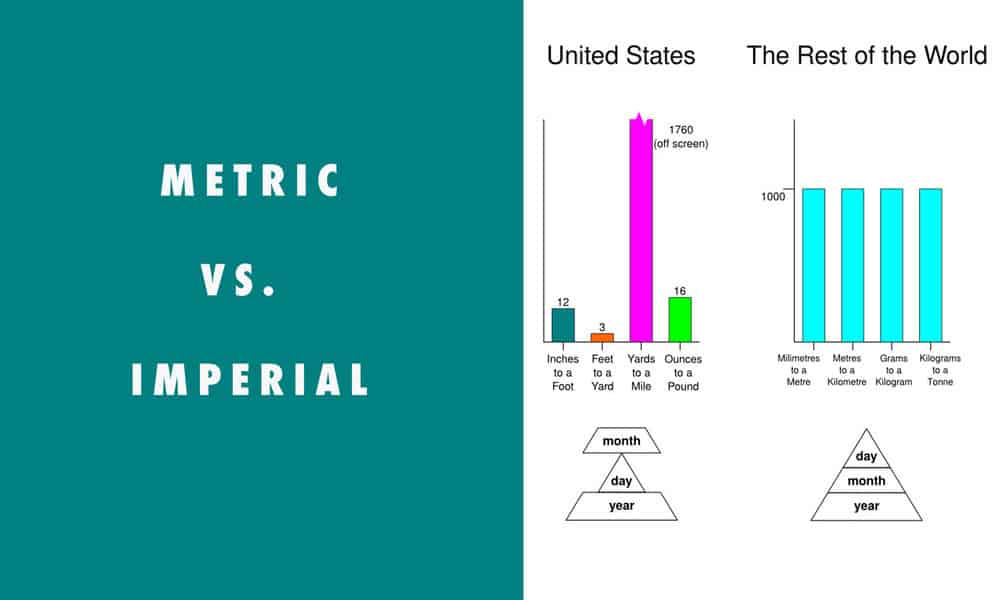Expats and tourists from the United States come to Costa Rica with a handicap. While most of the rest of the world, including Costa Rica, is using the metric system, the U.S., despite several efforts to change, has clung to the English system of measurement: inches, feet, miles, pounds, acres, etc. Some people steeped in the English system, even after living here for several years, have not been able to make sense of metrics and it causes them much confusion.
Currency conversion isn’t as much a problem, perhaps because it’s an operation used more frequently, but even so, some say they have to carry a calculator with them all the time. They are so used to thinking in terms of dollars to make a conversion computation just to get a sense of what the “real” value or price of something is.
Converting colones to dollars is a relatively easy process, however, because when it comes to making sense of the metric system of weights and measures, more complex mental gymnastics are required.
For some, the problem is compounded because they have spent their entire lives thinking of things in terms of the U.S. system. Many years of exposure to non-metric measurements have created an unconscious understanding of what pound, gallon, inch, yard and Fahrenheit mean.
They instinctively know how far a mile is. But when it comes to things expressed metrically, terms like liter, kilometer, centigrade, meter, hectare, centimeter, and gram can frequently cause some consternation because there is no internal sense of meaning; there is no deeply embedded, frame of reference. So without a handy calculator and conversion table, for transposing whatever it is into their reference measurements, they’re lost.
That means daily life here can be full of questions: What kind of mileage does my car really get? How fast is that speed limit? How far is it to my destination? If I need two feet of something, how many centimeters do I tell the clerk to give me? Is this 1,000-gram bag of laundry detergent a better buy than that other one that is two kilos?
Some things are relatively easy, like when comparing the value for two different bags of detergent, because we learn pretty fast that there are 1,000 grams per kilo. So, that calculation isn’t too difficult. But things like gas mileage, or knowing how many acres are in a hectare, or how many miles it is to the beach, are a bit different.
Figuring distances is probably the easiest if one remembers that a kilometer is a little more than a half-mile, actually .62 miles. Mentally multiply the kilometers on the roadside sign by .62 (or maybe even .6) and you can get a pretty good, albeit rough idea of a distance in miles. (An easy way to remember this is that when the speedometer on the car says 100 KPH the speed is “really” 62 MPH.)
But other things, like how many centimeters are in a yard, or liters in a gallon, or acres in a hectare, are a little more complex. For instance, calculating what the gas mileage of a car is without a calculator and a conversion table can be a difficult task!
If you just filled my car with 50 liters of gasoline, do you have a concept of how many gallons I just bought? A trip to the conversion table reveals that one U.S. gallon = 3.79 liters, so the 50 liter purchase was 13.19 gallons. Once that is known there is still a computation remaining – to convert the odometer reading from kilometers to miles.
For example, if the odometer reading is 500 kilometers, that’s 310 miles. Now that those two figures are known, to determine the “mileage,” 310 miles needs to be divided by 13.19 gallons. That will yield another figure that finally means something, 23.5 MPG. Now, at ₡610 per liter…
The Internet is a wonderful thing; a plethora of sites can help make conversions easy. A good one is: http://www.sciencemadesimple.com/conversions.html. Imbedded in it is a chart which, for the metrically impaired, can be used daily. I’m including it here for those who, like myself, are metric conversion disadvantaged (see box).
Hopefully, after making the conversions for a long enough time, one can begin to have the internal sense of what the metric figures mean, in real world terms. In the meantime, tape the conversion chart to the back of your iPad and keep practicing.
To view a metric system conversion chart, click here.






